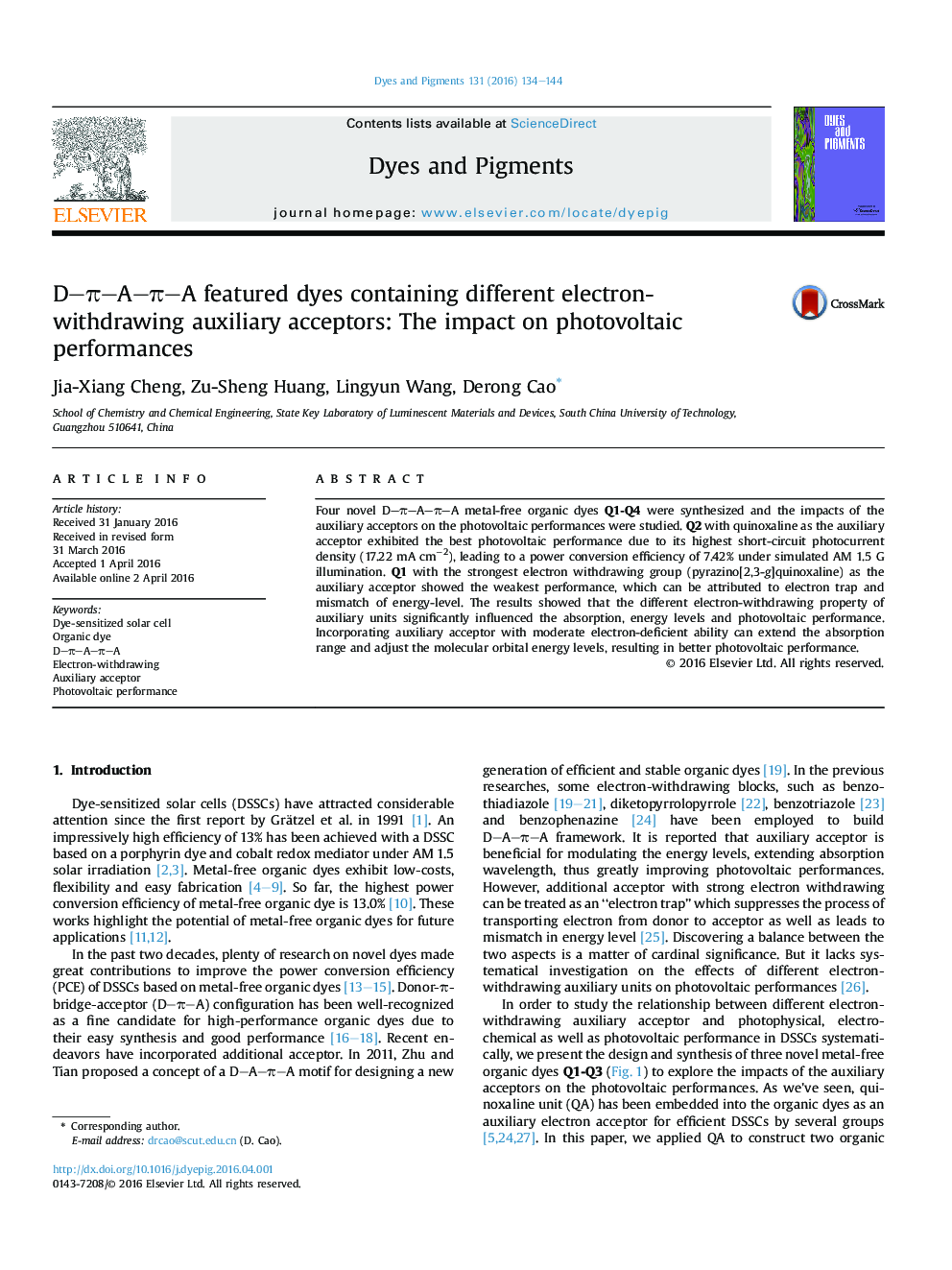| Article ID | Journal | Published Year | Pages | File Type |
|---|---|---|---|---|
| 175284 | Dyes and Pigments | 2016 | 11 Pages |
•Organic dyes with different auxiliary electron-withdrawing acceptors were prepared.•Impact of the auxiliary acceptors on the photovoltaic performance was studied systematically.•Auxiliary acceptor with a moderate electron-withdrawing capability improves photocurrent.•The cell based on dye Q2 obtained a power conversion efficiency of 7.42%.
Four novel D–π–A–π–A metal-free organic dyes Q1-Q4 were synthesized and the impacts of the auxiliary acceptors on the photovoltaic performances were studied. Q2 with quinoxaline as the auxiliary acceptor exhibited the best photovoltaic performance due to its highest short-circuit photocurrent density (17.22 mA cm−2), leading to a power conversion efficiency of 7.42% under simulated AM 1.5 G illumination. Q1 with the strongest electron withdrawing group (pyrazino[2,3-g]quinoxaline) as the auxiliary acceptor showed the weakest performance, which can be attributed to electron trap and mismatch of energy-level. The results showed that the different electron-withdrawing property of auxiliary units significantly influenced the absorption, energy levels and photovoltaic performance. Incorporating auxiliary acceptor with moderate electron-deficient ability can extend the absorption range and adjust the molecular orbital energy levels, resulting in better photovoltaic performance.
Graphical abstractFigure optionsDownload full-size imageDownload as PowerPoint slide
